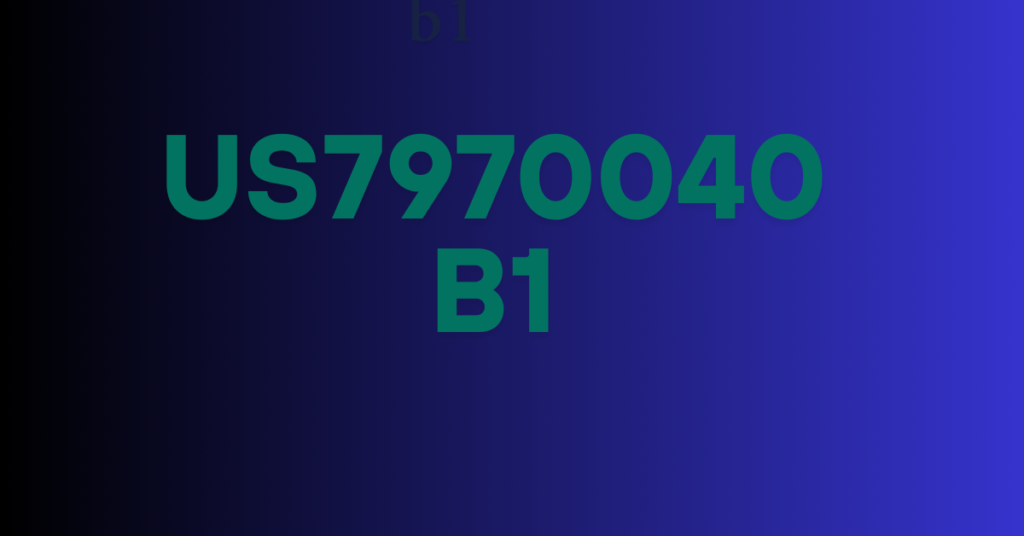Introduction to Laser Technology us7970040b1
Laser technology has come a long way since its inception, transforming industries and redefining precision in ways we never thought possible of us7970040b1. From medical procedures to manufacturing, lasers have become indispensable tools that enhance accuracy and efficiency. Yet, as the demand for higher precision grows, so does the need for innovation within this field.
Enter US7970040B1—a groundbreaking patent that’s set to revolutionize laser precision once again. This remarkable advancement not only enhances existing technologies but also opens doors to new possibilities across various sectors. Let’s delve into how this patent is reshaping the landscape of laser technology and what it means for the future.
Evolution of Laser Precision
Laser technology has come a long way since its inception in the 1960s. Initially, lasers were bulky and limited to basic applications. Over time, advancements gave rise to more compact models with enhanced capabilities.
The introduction of solid-state and fiber lasers revolutionized precision. These innovations allowed for finer control over laser beams, making them ideal for intricate tasks.
As industries sought greater accuracy, researchers focused on refining beam quality and stability. This pursuit led to breakthroughs that significantly improved cutting and engraving processes.
With each advancement, laser systems became increasingly versatile. They found applications in medicine, manufacturing, and telecommunications—each benefiting from heightened precision.
Today’s lasers can achieve incredible levels of detail that were unimaginable just a few decades ago. The journey of laser evolution continues as new technologies emerge, promising even higher standards in performance and reliability.
US7970040B1 Patent: A Game Changer in Laser Precision
The US7970040B1 patent has emerged as a pivotal development in the realm of laser technology. Its innovative approach redefines how precision is achieved, setting new standards across various applications.
This patent introduces advanced mechanisms that enhance beam stability and focus. By optimizing these attributes, it minimizes errors traditionally associated with laser operations.
Industries reliant on fine-tuned accuracy—such as manufacturing and healthcare—now benefit from more reliable outcomes. The ability to manipulate lasers at unprecedented levels opens doors for improved product quality and efficiency.
Moreover, the patent encourages further research and innovation within the field. As companies adopt this technology, we can expect a ripple effect that influences future advancements in laser systems worldwide.
How the Patent Works and Its Advantages?
The US7970040B1 patent introduces a groundbreaking approach to laser precision by optimizing beam control and focusing techniques. This innovation utilizes advanced modulation methods that adjust the laser intensity in real-time, ensuring accuracy even at high speeds.
One of its standout advantages is reduced thermal distortion. By minimizing heat application during cutting or engraving processes, materials remain stable and undamaged. This aspect significantly enhances product quality across various applications.
Additionally, the patent allows for adaptive feedback systems that monitor performance continuously. Such dynamic adjustments lead to increased efficiency and lower material waste.
With enhanced targeting capabilities, operators can achieve cleaner cuts with less effort. Industries ranging from manufacturing to medical technology are set to benefit tremendously from this leap in precision engineering offered by us7970040b1.
Applications of US7970040B1 in Various Industries
The US7970040B1 patent has opened doors across multiple sectors. In manufacturing, its precision enhances cutting and engraving processes, allowing for intricate designs that were previously unattainable.
In healthcare, this technology is revolutionizing surgical procedures. Laser treatments now offer less invasive options with quicker recovery times. The accuracy of US7970040B1 minimizes damage to surrounding tissues.
The aerospace industry benefits significantly as well. Enhanced laser capabilities improve materials testing and component fabrication. This leads to safer and more efficient aircraft design.
Even in telecommunications, the patent’s influence can be seen in fiber optic technologies that leverage precise laser alignment for better data transmission.
Each application showcases how US7970040B1 not only refines existing methods but also paves the way for innovative solutions across diverse fields. It exemplifies a leap forward in laser technology’s versatility and effectiveness.
Impact on the Future of Laser Technology
The advent of US7970040B1 is poised to usher in a new era for laser technology. Its innovative design enhances the precision and effectiveness of lasers, making them more adaptable across various fields.
Imagine the implications for medical procedures. Surgeons could perform operations with unprecedented accuracy, reducing recovery times and improving patient outcomes.
In manufacturing, this patent may streamline production processes. Companies can create intricate designs while minimizing waste and maximizing efficiency.
Moreover, as industries become more reliant on automation, US7970040B1 will likely fuel advancements in robotics and AI integration with laser systems.
This synergy could lead to smarter machines that make decisions based on real-time data analysis.
As research continues to explore its full potential, we might witness breakthroughs that redefine how we think about lasers altogether. The future looks bright—quite literally!
Conclusion
The US7970040B1 patent represents a pivotal advancement in laser technology, redefining what is possible in precision and efficiency. As industries evolve and demand for high-precision applications increases, this innovation stands at the forefront of enhancing capabilities across various fields.
With its groundbreaking approach to laser modulation and control, US7970040B1 not only improves existing techniques but also opens doors to entirely new possibilities. Industries such as manufacturing, medical procedures, and telecommunications are poised to benefit significantly from these advancements.
As we look ahead, the implications of this patent extend beyond immediate applications. The ongoing development in laser technologies promises to shape future innovations that could redefine standards across multiple sectors. The world of lasers is changing rapidly, and staying informed about patents like US7970040B1 will be crucial for professionals aiming to leverage cutting-edge solutions.
Embracing these advancements will undoubtedly lead us into a new era where precision becomes standard practice rather than an exception—transforming industries globally along the way.
ALSO READ: Mexis Classroom: Revolutionizing Online Education”
FAQs
What is US7970040B1 and why is it important in laser technology?
US7970040B1 is a patented innovation that significantly improves laser beam stability and accuracy, transforming how lasers are used in various industries.
How does US7970040B1 enhance precision in manufacturing
The patent introduces advanced modulation and focusing techniques that enable cleaner, more accurate cuts with reduced material waste.
In what ways does US7970040B1 benefit the medical field?#
It allows for minimally invasive procedures with precise laser control, leading to faster healing and reduced damage to surrounding tissue.
Can US7970040B1 technology be integrated with AI or robotics?
Yes, its precision control features are ideal for integration with automated systems, supporting smarter and more efficient operations.
What industries are expected to benefit the most from US7970040B1?
Manufacturing, healthcare, aerospace, and telecommunications stand to gain from enhanced laser capabilities provided by the patent.






